The Bible states that King David’s grandson Rehoboam built numerous cities in Judah, including the important site of Lachish. Tel Lachish has been excavated over the course of seven expeditions. Yet until recently, there was no corresponding archaeological evidence of late-10th-century b.c.e. fortification wall at the site.
Prof. Yosef Garfinkel has led two of these expeditions. In 2022, he discussed his discoveries with Let the Stones Speak podcast host Brent Nagtegaal. The following interview has been edited for clarity.
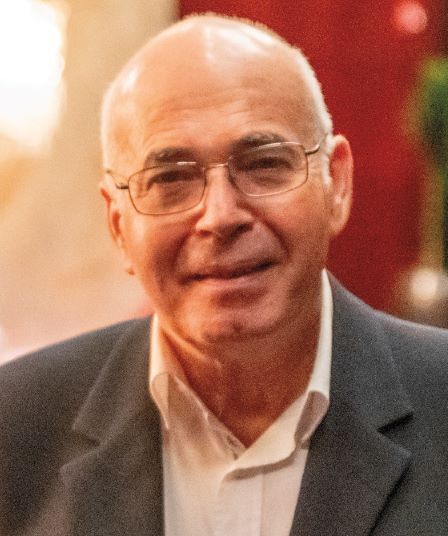
Brent Nagtegaal (BN): Prof. Yosef Garfinkel, thanks very much for joining us today.
Prof. Yosef Garfinkel (YG): It’s my pleasure.
BN: You led the fourth expedition here a few years ago and now you’re back. What’s the draw here at Lachish?
YG: Well, first of all, the new project is in cooperation with a university from Korea and also some Australian universities. So it’s the seventh expedition to Lachish because there were two other expeditions after we left. We were the fourth, there were the fifth and sixth and now we are the seventh.
BN: So why do people keep coming back to this site as opposed to others?
YG: This is one of the most important archaeological sites in the Near East, not just Israel. It’s really amazing because this site is connected with Egypt, it’s connected with Mesopotamia, it’s connected with Greece and Cyprus, and it’s connected with the biblical tradition.
BN: The biblical tradition is probably the most interesting for our listeners. Perhaps you could just briefly give the main highlights of Lachish and its importance in biblical history for us.
YG: Lachish was one of the important Canaanite cities. We know about it from the strengths of the fortifications, from the richness of the archaeological discoveries that were made here. We have the Amarna tablets where we have six letters the king of Lachish sent to Egypt. And then in the biblical tradition, this Canaanite city was destroyed by Joshua when the people of Israel entered the land of Canaan.
BN: Then following on that does it fall out of use of importance? And if it does, till when does it feature in the Bible?
YG: The Bible mentions Lachish as a Canaanite city that had been conquered by the people of Israel in the time of Joshua. And then the Bible mentions Lachish again about 300 years later or so, when it was first fortified by King Rehoboam, the grandson of David and the son of Solomon.
BN: That was the period that you spent a lot of time in your first expedition uncovering. That was one of your research questions, right? To try and find that city.
YG: If you put it in a larger context, I dedicated the last 15 years or so to archaeological research of the 10th century b.c.e. I started at Khirbet Qeiyafa and then another site called Khirbet al-Ra’i, where we have remains from the time of David. We have carbon dating clearly from 3,000 years ago. Also, the pottery in both sites is the same, and we have a fortified city in Judah from the time of David. In Khirbet Qeiyafa, we discovered a nice temple model, which fits the biblical description of Solomon’s palace and temple. The same type of architecture, which is typical to royal architecture, appears in the model, and the model was found here in Judah and the dating is 1000 b.c.e. So we have David and Solomon. And then there was a third king, Rehoboam.
BN: What can archaeology tell us about Rehoboam?
YG: There is a biblical tradition that Rehoboam fortified 15 cities in Judah, and one of them is Lachish [2 Chronicles 11:9]. We decided to go to Lachish because the identification of Lachish is beyond any doubt. And when we came here, as we said, we were the fourth expedition, but the point was that the first, the second and third expedition didn’t find much evidence about the first Iron Age level at the site. This is Level v, by the way. The last Canaanite city is Level vi.
BN: So each of these numbers are basically the different cities through different periods that lived on the same site.
YG: When you start excavating at Level i, it was the late Persian and Hellenistic. You go down to Level ii, it’s been destroyed by the Babylonians. You go further down and Level iii has been destroyed by Sennacherib in 701 b.c.e. You go further down, you have Level iv, which is already a fortified city all over the mound, and under it you have Level v. And then you have a hiatus and levels vi and vii are already Canaanite.
BN: So you’re saying that this Level v city is the one that, until your expedition, there was little or no evidence of it on this site?
YG: There was heavy debate about Level v; first of all, if it was a village or city. And the second debate was about the chronology. Some people said it’s from the 10th century b.c.e., some people said it’s from the ninth century b.c.e., and other scholars thought the eighth century b.c.e. So you have a range of ideas—250 years between the earliest and the latest proposed dating.
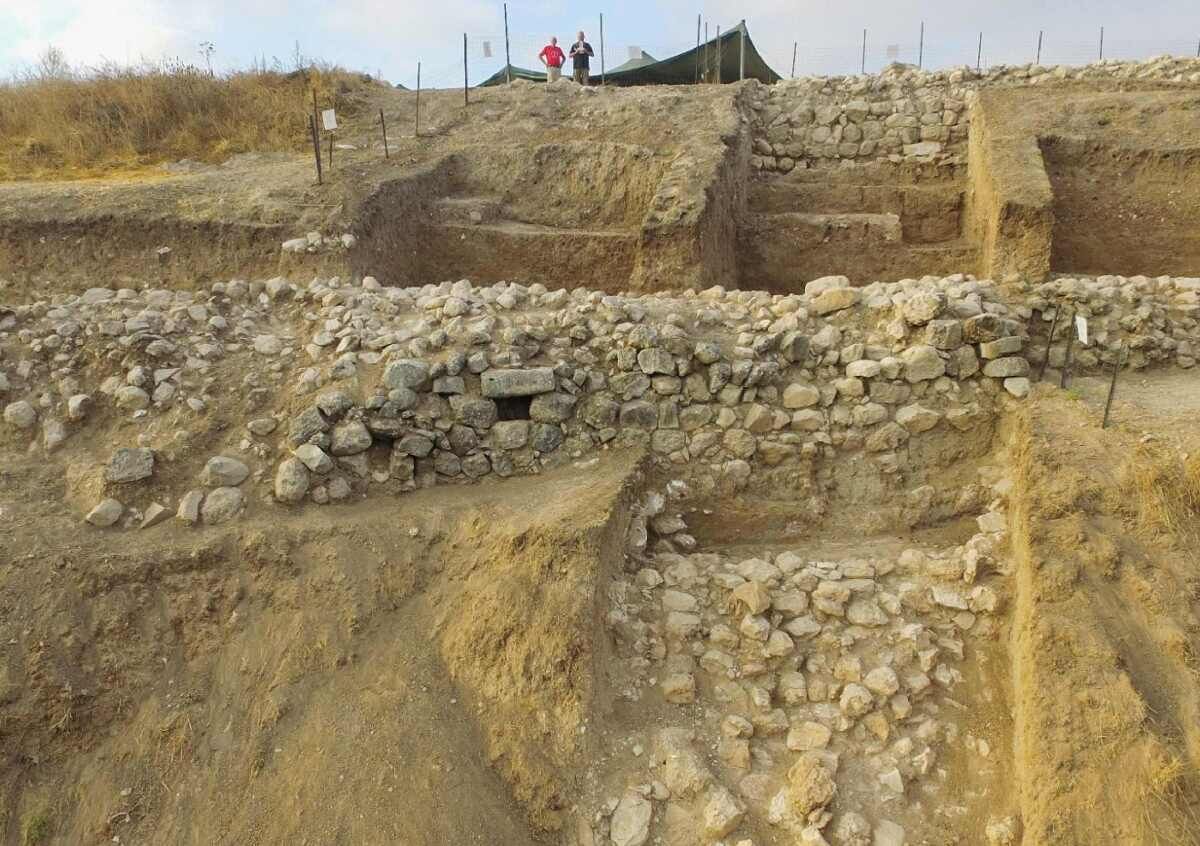
BN: And so you came here with this research question in mind: Is this a fortified city during Level v? And let’s try and get some dating for it if we can find it. Did you find that and how are you going to continue on from that?
YG: The major question that I asked myself is why the earliest expedition couldn’t find clear evidence from Level v, and it was a bit unclear. My conclusion was that maybe it’s a smaller site. The other expedition excavated mainly in the western and southern part of Tel Lachish. The northeast corner of the tel was hardly excavated. Now we know, for example, at Hazor that in the 10th century b.c.e. it was a smaller city, and only later in the Iron Age they built a much larger city, and you see it in other places as well. So I predicted that probably at Lachish we would have the same phenomenon. So we should find the earliest city or the place where the earliest city existed, and there we will have answers. If it was on a smaller part of the site and not all over, this is where we need to investigate.
I asked myself, If you come to Lachish and you build a smaller city, where would you build it? In the north, in the east, in the south, in the west? And my conclusion was it’s here in the northeast corner. Why? Because the valley is over here. In the valley you have water. The valley is good land for agriculture. And also the valley is the main road leading from Ashkelon, the port city, into Hebron in the hill country.
From Ashkelon to Lachish is a one-day walk. From Lachish to Hebron is another day’s walk. So caravans leaving the port city with all kind of goods will come here, stay here a few days, participate in various economic activities, and then continue another day to Hebron. So the valley is important. And I said the orientation of the city should be toward the valley. So that’s why we chose this area, and we excavated here along the slope in various areas. And here, for example, we came immediately to Level vi, which means that levels i through v had completely eroded away. And in other parts, we found immediately Late Bronze or even Middle Bronze periods. So where is this disappearing level, Level v?
After we understood the erosion processes, we started excavating a little further away. And indeed we found Level v. We found a city wall, and we found houses abutting the city wall, so we know that Level v is fortified.
BN: How big was the wall that you discovered?
YG: It’s about 3 meters wide—a very impressive city wall. Today it’s all covered with vegetation, so it’s hard to see, but I can give you photos taken during the excavation and you can see what it looks like. And then the other question is, what is the dating? We know it’s Level v because it was covered by the city wall of Level iv, and it’s sitting on the Canaanite Level vi. So if Level vi is below and Level iv is above, it must be v. This is the stratigraphic sandwich.
We sent olive pits for the carbon dating and the dates were from the last part of the 10th century b.c.e. and the first part of the ninth century b.c.e., something like 920 b.c.e. till about 860 b.c.e. This is the range of the radiocarbon dating. So this exactly fits a city that was built in the time of Rehoboam.
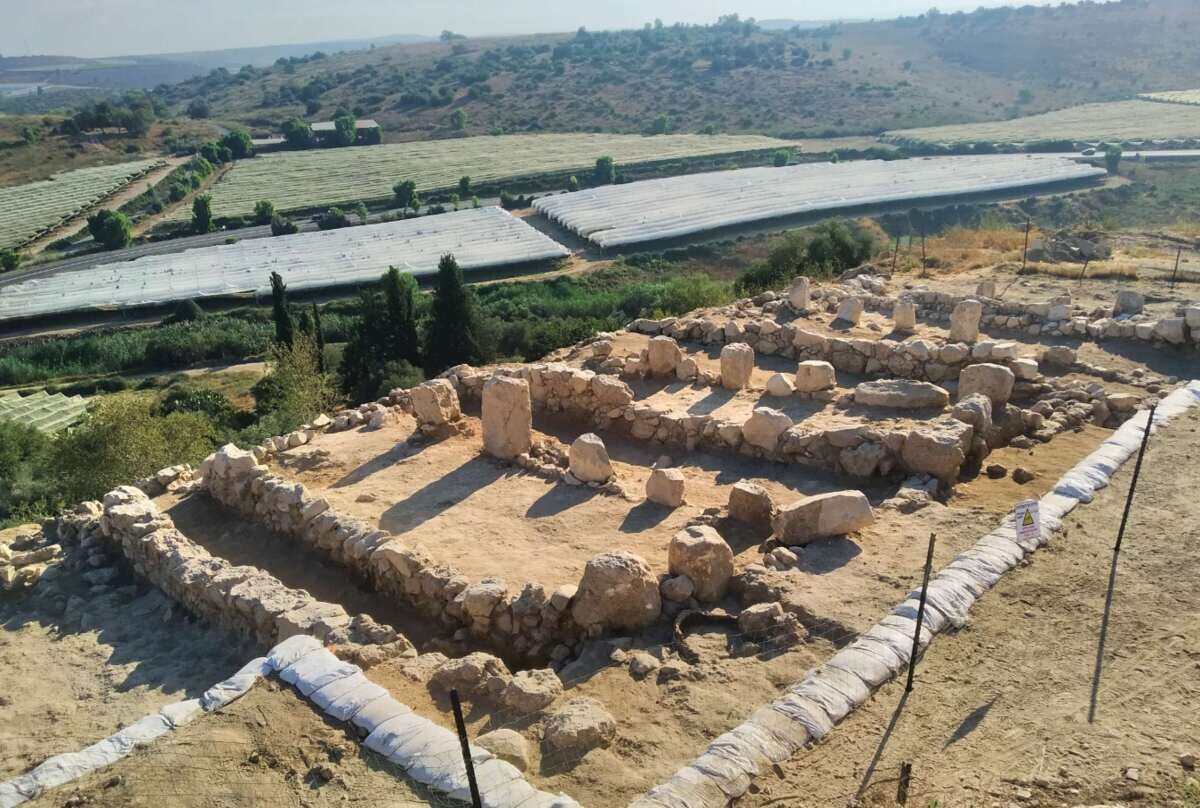
BN: I understand that there is a debate about just how big the city was during Level v. You and one of your colleagues wrote a paper about this, and he has a different idea of the size of the city during Rehoboam’s time, or this Level v. What does he think, and what and how do you diverge?
YG: The point is that we found part of the city wall of Level v in two places—both in the northeast part of the site. And the question is why the expeditions who worked in the west and in the south didn’t find more of the city wall? So I thought that at Lachish, based on other sites like Tel el-Farah in the north (biblical Tirzah), such Iron Age cities didn’t have much manpower when they started out; they didn’t have many resources. So they built smaller cities and after 100 years or so, when you have more population, more resources, then they enlarge the city and you can see more urban development. And I saw that probably at Lachish it’s the same process. They came and built a smaller city on one third or one fourth or 40 percent of the tel. And after 100 years, when you have more population, they enlarge and built Level iv all over the site.
So this was my personal view, and I’m sure about this. My young student, Hoo-goo Kang, he has a bigger appetite. He said, No. Level v was immediately built all over the site. So you want to prove me wrong? OK, why not? I’d be happy to be wrong.
BN: So I think you’ve told me before he’s even more maximalist than you.
YG: Yes, he is. He wants to go to the opposite side, to the southwest corner of the site and to make a trench along the fortification line. And we will try to find the Level v city wall in the far edge of the site.
BN: And he’s digging at the same time, right?
YG: Yes, we will work together. So if he’s right, then Level v was bigger, and if I’m right, Level v was smaller.
Editor’s note: After two more brief seasons of excavation of the site after this interview, evidence of the 10th-century b.c.e. city wall was indeed found at the opposite side of the tel, showing that the entire site of Lachish was fortified during the time of Rehoboam. Professor Garfinkel discusses this on a recent Let the Stones Speak podcast, “King Rehoboam’s Fortifications Found at Biblical Lachish”.
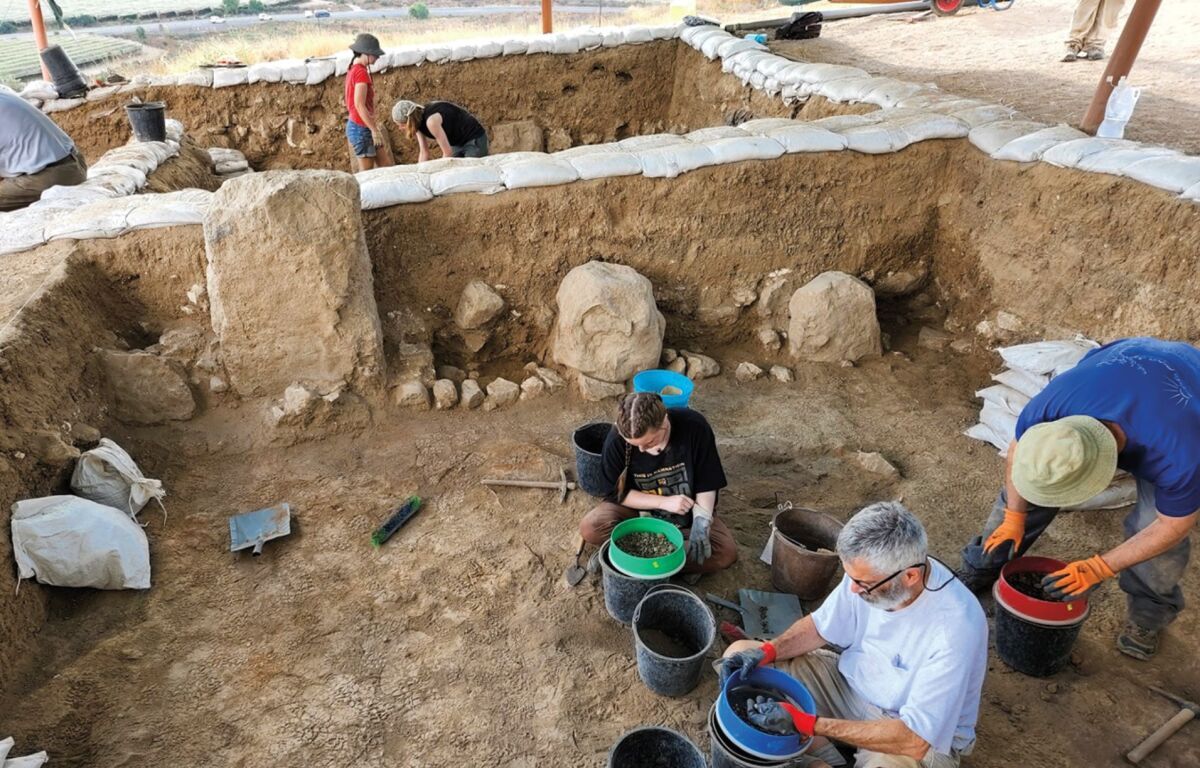
BN: But either way, we’re debating about the size of the city of Level v that dates from around Rehoboam’s time, not whether it existed.
YG: We have radiocarbon dates from the old excavation. We have about four to five radiocarbon dates. But about three or four months ago, we completed a very large radiocarbon project, and we sent to Oxford University 80 samples for dating from Lachish and from Khirbet al-Ra’i. We wanted to have better dating of the 13th century b.c.e., the 12th century b.c.e., the 11th, the 10th and the 9th. Some of the samples from Lachish show that we have Canaanite and then the kingdom of Judah. And then in Khirbet al-Ra’i we have the time of the judges. When Lachish was uninhabited, the settlement center moved to Khirbet al-Ra’i. And the two sites together give us the full sequence.
BN: I think it is interesting, you referenced the Bible talking about Rehoboam building all these certain cities, this account is mentioned in the book of Chronicles, if I’m not mistaken. What’s the significance, do you think, of the fact that it’s in Chronicles and perhaps not mentioned in an earlier source?
YG: The Bible is not a newspaper in which you have exact information about day by day by day. They took 400 years from David to the destruction of the temple, and then it’s all composed and condensed into the books of 1 Kings and 2 Kings. So they couldn’t put in all the information. I wish the Bible was 100 times bigger.
BN: Don’t we all.
YG: We have a very condensed history and sometimes for some kings you have only few sentences and that’s it. So the whole 20 or 30 years, you almost know nothing about their activities. So I don’t know why something is kept here, why something is kept there. The fact is, that’s what we have.
BN: And then the fact that the biblical book of Chronicles is written as one of the last books in the Tanakh. Rehoboam is 500, 600 years, even 700 years some people would say, from the time of writing. And so how would the chronicler know that Rehoboam built this site?
YG: But basically what we have is a city list. We have a list of 45 cities in Judah and Benjamin. And the list could be kept as a list. It’s not a big narrative about some other activities. It’s very condensed information, as a matter of fact.
BN: So I know that there are some other archaeologists that came out after you discovered this, this fortification of Level v, dating to the time period around Rehoboam. And they came and said, OK, fine, you found a city, city walls and it dates to around Rehoboam’s time, but it’s not Rehoboam. It’s locals. It’s probably a local Canaanite population. How would you give ethnic identity to archaeological discoveries? What can you say to this: the Judean nature of the fortification?
YG: We have a very nice city wall, and the houses are abutting the city wall. In Khirbet Qeiyafa we have the same features, but in Qeiyafa, it was a casemate city wall. So the city wall was not a solid wall. It contained rooms. Here it’s a solid wall and I think it’s indicating that Lachish was more important from the very beginning. That’s why they built a stronger city with a solid wall. But the houses abut the city wall here like in Khirbet Qeiyafa and like in other cities in Judah like Tel Natsbeh, Beth Shemesh, Tel Beit Mirsim and Tel Shiva. So it fits perfectly with the typical Judean urban concept, one you don’t have in other sites. In the north, in the kingdom of Israel, or in Philistine sites, you don’t have houses in the city walls abutting each other.
And then you have the pottery. We have the typical Judean pottery, and you can see the continuation of this material culture here in Tel Lachish. And also the site itself, you have Level v, then Level iv was built on top of it and Level iii without any destruction. So the same people continued to live here till Sennacherib came here in 701 and destroyed the city.
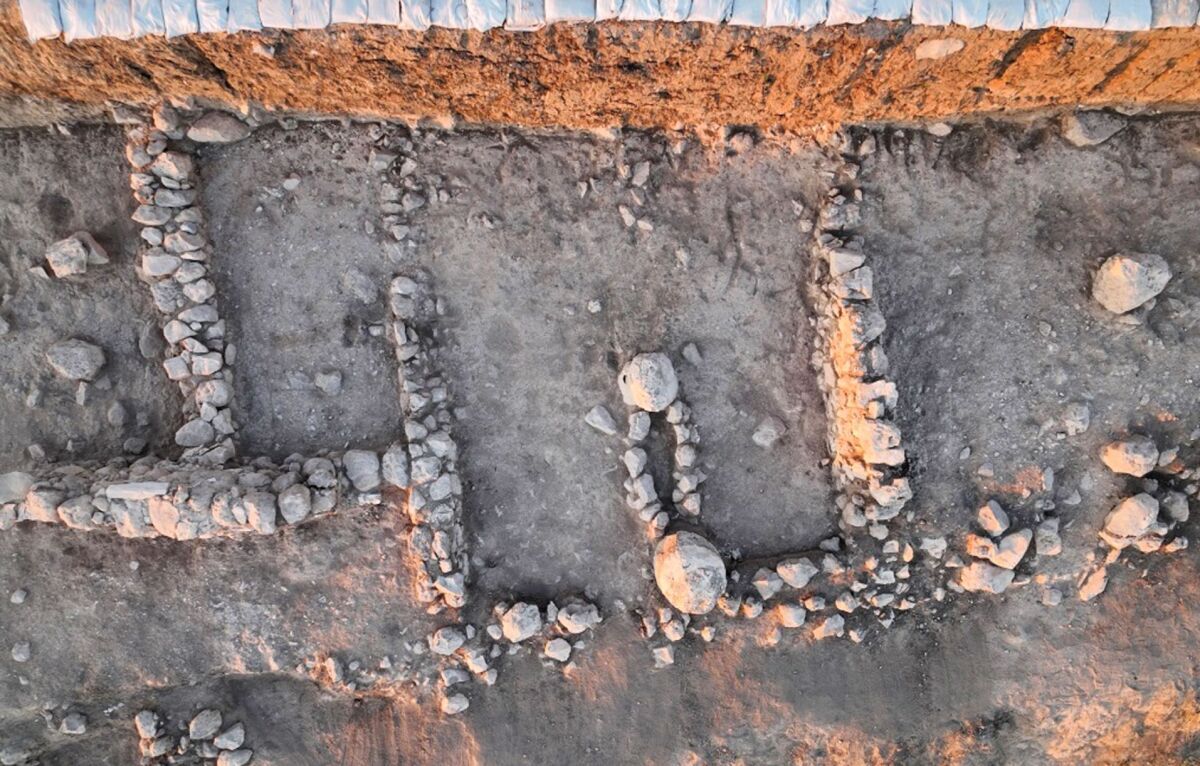
BN: So you’re saying that because there’s no destruction layer between then we definitely know this was run by the Judeans, it makes sense that Level v was used by the same people?
YG: Exactly. Levels v through iii are part of an ongoing occupation of about 200 years.
BN: So that was your fourth expedition. Now you’re back in 2022. I see that this area behind us has already been prepared for excavation. You’ve got a surveyor out at the site today to do a bit of preparatory work. When do you begin, how long is it going to last, and what do you hope to uncover as you’re excavating this year?
YG: The idea is to enlarge the area, and I hope to excavate after, three years or so, maybe six, seven or eight complete houses. And once we have more houses and more pottery, we’ll have a better understanding what is the fingerprint of this period from a pottery point of view. We’ll have more animal bones and we can have information about cults if we find figurines or not find figurines. It’s also important if we find an inscription, if we find a seal, whatever, a metal object, whatever. We just want to know more about the people who lived here in the later part of the 10th century and beginning of the ninth century b.c.e.
BN: So adjacent to us here is where you found the city wall and the house that you’re talking about. And this is basically a continuation in this direction of that same city wall and adjacent houses you’re hoping to find.
YG: Yeah, exactly.
BN: So perhaps just one final question. If you could put this discovery of a fortification during the late 10th century in the context of the larger debate over David and Solomon, do you feel like this debate is coming to a close now or is it going to keep on raging no matter what is discovered? Typically, Rehoboam doesn’t fit into this debate, but this site is putting Rehoboam into that debate. Where does it stand right now?
YG: Well, the kingdom of Judah existed for about 400 years. The eighth and the seventh are well known because we have the Babylonian destruction and also the Assyrian destruction. But the earlier two centuries, the ninth and the 10th, are not so well known and that’s why the debate started. And maybe 40 years ago, indeed there was a room for such a debate because we didn’t have much information. And I dedicated a really large part of my academic life to research the 10th century b.c.e. In Khirbet Qeiyafa and Khirbet al-Ra’i, we have the beginning of the 10th century b.c.e., and here in Lachish, we have the latter part of the 10th century b.c.e. and the ninth century b.c.e. So together all these three sites bridge the gap, and I don’t think that today people can have the same extreme ideas as they have 40 years ago.
BN: Well, thanks very much for your time today. I really hope to come back and see you during excavations.
YG: Sure, you are welcome to join us.
BN: I’m sure your team’s going to do great work out here, all of your team from the different parts of the world. Thanks very much for your time.
YG: Sure, it’s my pleasure.